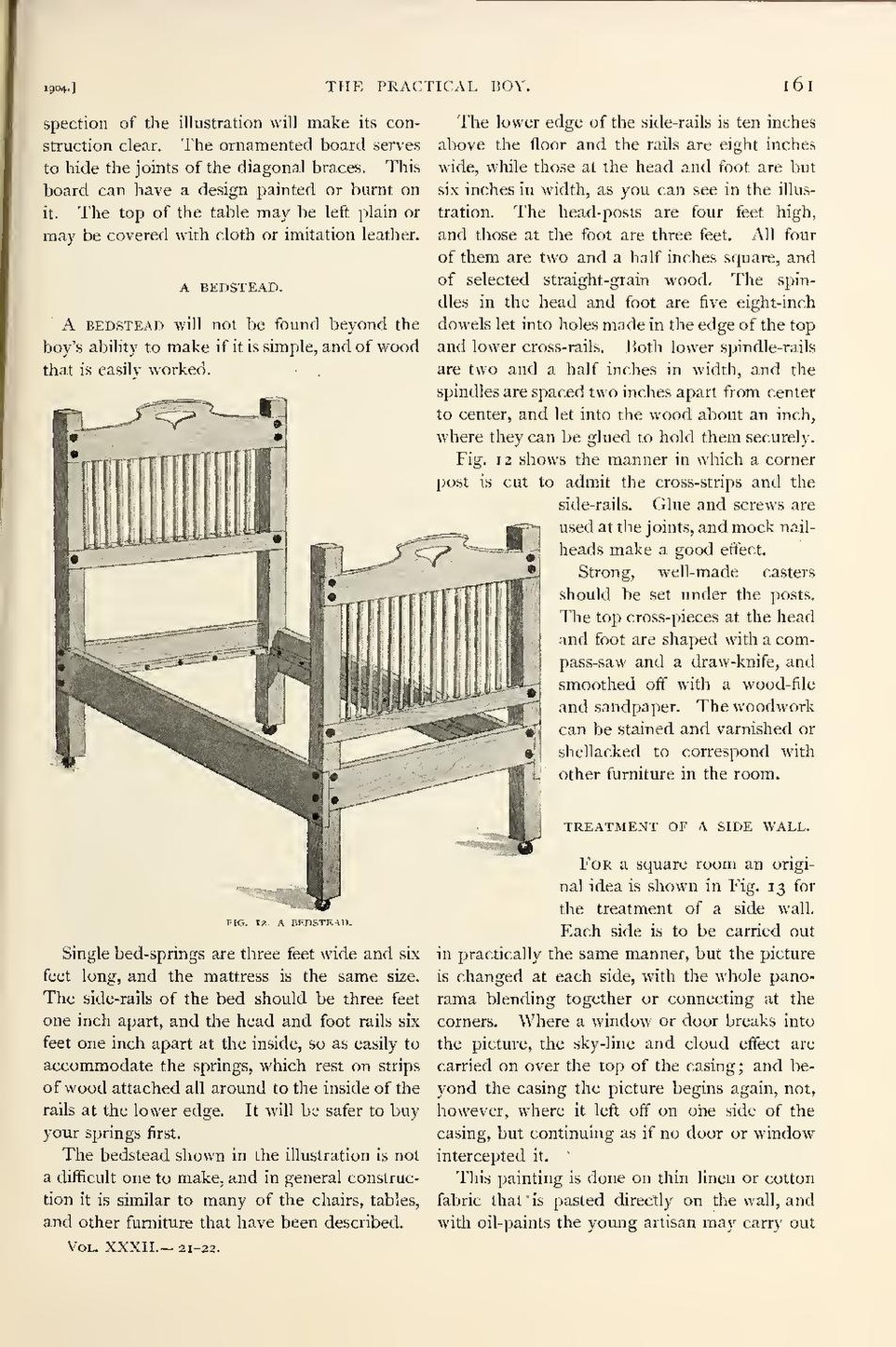spection of the illustration will make its construction clear. ‘The ornamented board serves to hide the joints of the diagonal braces. This board can have a design painted or burnt on it. The top of the table may be left plain or may be covered with cloth or imitation leather.
A Bedstead.
A Bedstead. will not be found beyond the boy's ability to make if it is simple, and of wood that is easily worked.

Fig. 12. A Bedstead.
Single bed-springs are three feet wide and six feet long, and the mattress is the same size. The side-rails of the bed should be three feet one inch apart, and the head and foot rails six feet one inch apart at the inside, so as easily to accommodate the springs, which rest on strips of wood attached all around to the inside of the rails at the lower edge. It will be safer to buy your springs first.
The bedstead shown in the illustration is not a difficult one to make, and in general construction it is similar to many of the chairs, tables, and other furniture that have been described.
The lower edge of the side-rails is ten inches above the floor and the rails are eight inches wide, while those at the head and foot at six inches in width, as you can see in the illustration. The head-posts are four feet high, and those at the foot are three feet. All four of them are two and a half inches square, and of selected straight-grain wood. The spindles in the head and foot are five eight-inch dowels let into holes made in the edge of the top and lower cross-rails. Both lower spindle-rails are two and a half inches in width, and the spindles are spaced two inches apart from center to center, and let into the wood about an inch, where they can be glued to hold them securely.
Fig. 12 shows the manner in which a corner post is cut to admit the cross-strips and the side-rails. Glue and screws are used at the joints, and mock nail-heads make a good effect.
Strong, well-made—casters should be set under the posts. The top cross-pieces at the head and foot are shaped with a compass-saw and a draw-knife, and smoothed off with a wood-file and sandpaper. The woodwork can be stained and varnished or shellacked to correspond with other furniture in the room.
Treatment of a Side Wall.
For a square room an original idea is shown in Fig. 13 for the treatment of a side wall. Each side is to be carried out in practically the same manner, but the picture is changed at each side, with the whole panorama blending together or connecting at the corners. Where a window or door breaks into the picture, the sky-line and cloud effect are carried on over the top of the casing; and beyond the casing the picture begins again, not, however, where it left off on one side of the casing, but continuing as if no door or window intercepted it.
This painting is done on thin linen or cotton fabric that is pasted directly on the wall, and with oil-paints the young artisan may carry out